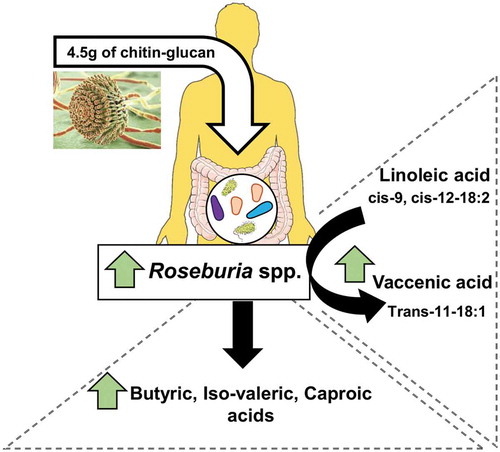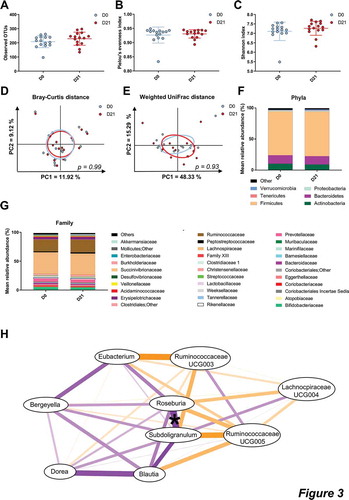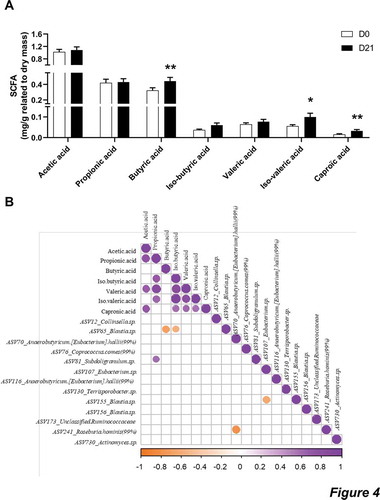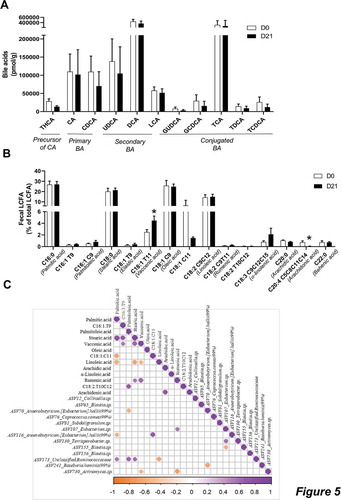Figures & data

Table 1. Nutrient intake before and after 3 weeks of chitin-glucan supplementation in healthy volunteers.
Figure 1. Protocol design of the intervention.

Figure 2. Gastrointestinal tolerance.

Table 2. Bacterial taxa and ASV significantly different after 3 weeks of CG intake.
Figure 3. CG did not change the overall composition of the gut microbiota.

Figure 4. CG increased the fecal concentration of butyric, iso-valeric and caproic acids.

Figure 5. CG increased the fecal concentrations of vaccenic acid.

